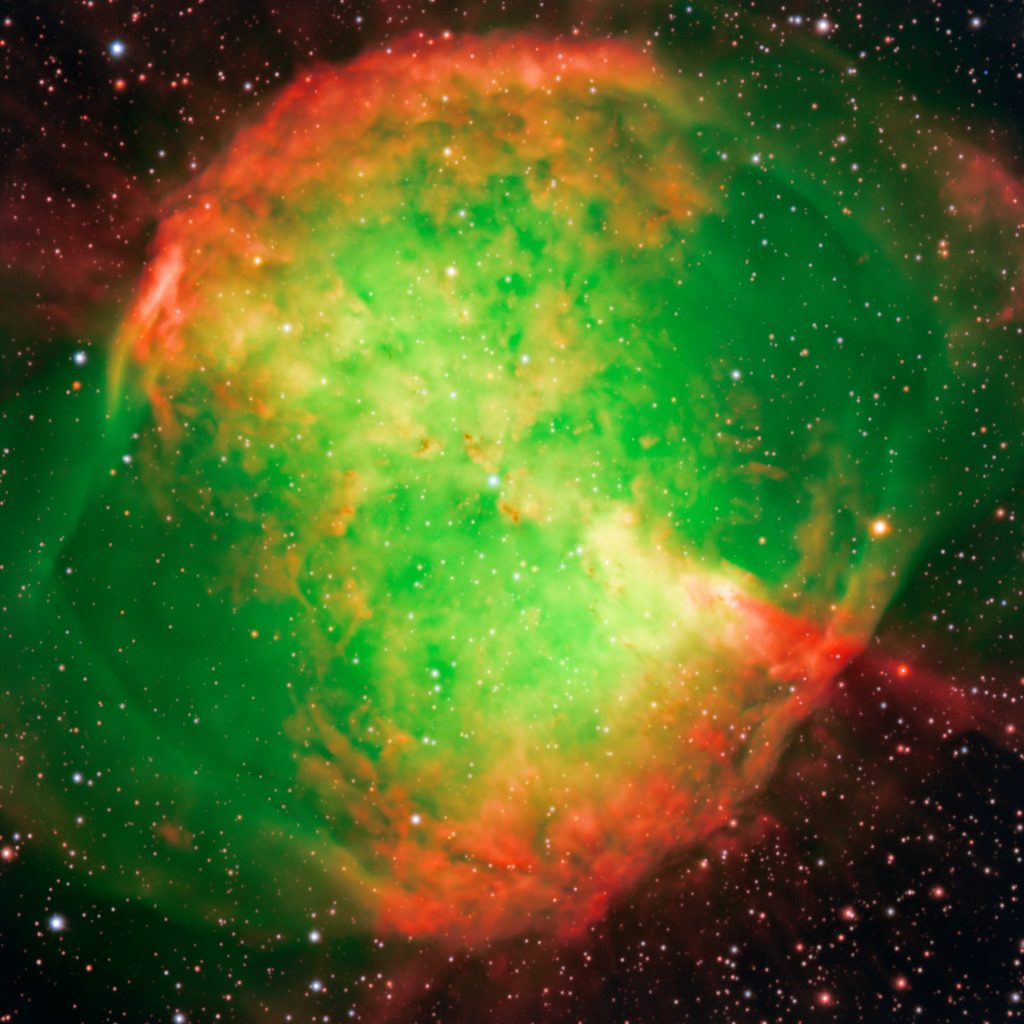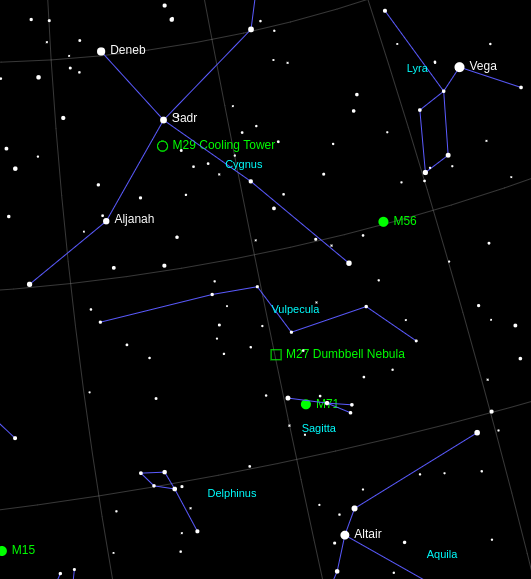The Dumbbell Nebula — M27 in the Messier Catalogue or NGC 6853 — is a planetary nebula in the constellation of Vulpecula.

The Dumbbell Nebula was formed from the outer layers of a dying star that were ejected after it had used up most of its nuclear fuel. The progenitor star is now a white dwarf, around half the mass of the Sun, located at the centre of the expanding cloud of dust and gas that forms the nebula.
Discovered by Charles Messier in 1764, the Dumbbell Nebula has an apparent magnitude of 7.5 and can easily be seen with a small telescope or good pair of binoculars.

Location
As Vulpecula is a faint constellation, the Dumbbell Nebula is best located from the brighter constellations of Cygnus and Sagitta.
The equatorial coordinates of the Dumbbell Nebula are:
Right Ascension: 19h 59m 36.34s
Declination: +22° 43′ 16.09″
To find the current position of the Dumbbell Nebula in the sky from your location, visit our Night Sky Simulator.